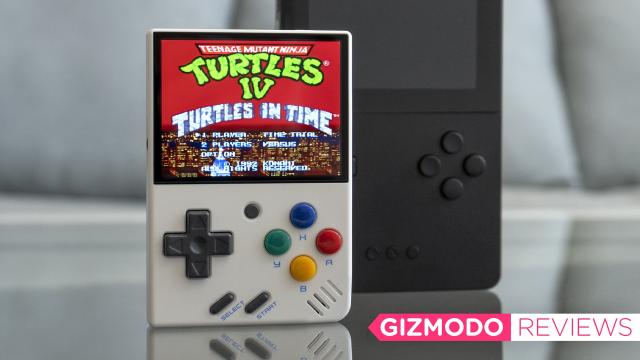As excellent a retro handheld as the Analogue Pocket is, at $US220 ($305) it’s an expensive piece of hardware — pricier than even the Nintendo Switch Lite. Analogue’s use of hardware emulation delivers a flawless retro gaming experience, but don’t write off software emulation just yet. For $US60 ($83), the Miyoo Mini is a brilliant little handheld with excellent controls, a solid screen, and performance that punches well above its price tag.
The next generation of handheld emulators coming out of China is just around the corner, but as these devices get more powerful and more expensive, the cheaper alternatives are also continuing to be further refined and polished — and that just about sums up what you’ll get from the Miyoo Mini. It isn’t breaking any new ground and you can forget about trying to play games from more powerful retro consoles like the N64 with it, but for someone looking to dive back in to their favourite 8- and 16-bit games of their youth, the Miyoo Mini is an all-around excellent device with a very appealing price tag.
Note: A sample of the Miyoo Mini was provided to Gizmodo by online retailer KeepRetro.
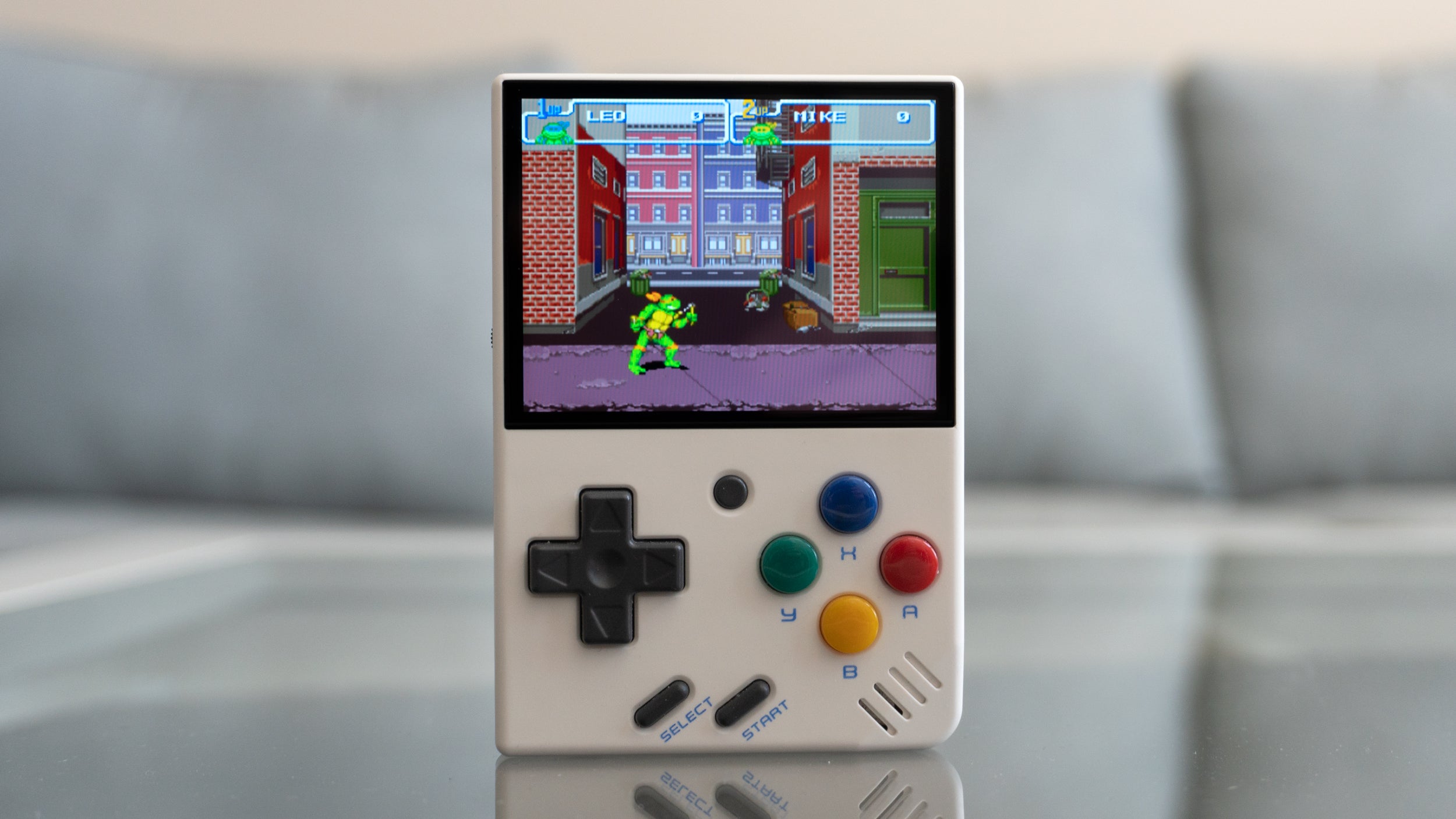
Miyoo Mini
WHAT IS IT?
A tiny Game Boy-inspired handheld gaming device capable of playing countless retro titles through emulation.
PRICE
$US60 ($83)
LIKE
Fantastically portable while still featuring controls that make it highly playable, plus a custom OS that's very easy to navigate without having to memorise endless button shortcuts.
DISLIKE
An excellent screen is marred with very limited viewing angles; performing firmware updates requires very specific steps to avoid bricking the console.
A Perfect Size
As chunky as the original Game Boy was, the handheld that arguably took portable gaming mainstream still feels incredibly comfortable to hold and play. It’s undoubtedly one of the reasons Analogue chose to make its Pocket nearly the exactly same size as the Game Boy, but in a time when ultra-slim phones can slip effortlessly into a pocket, there’s also some appeal for a more compact handheld gaming machine.
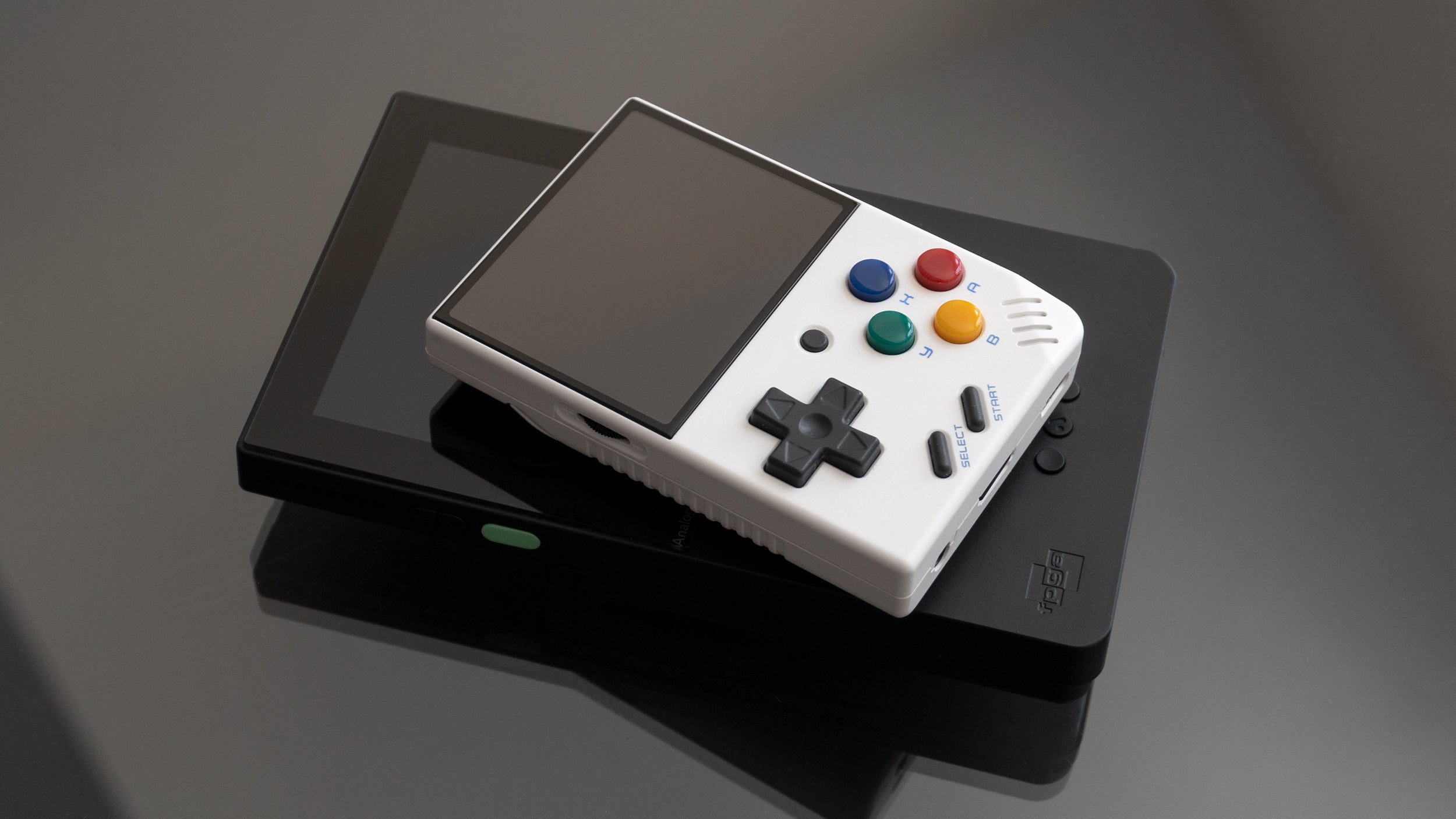
Devices like the FunKey S and the Thumby take the idea of a tiny gaming machine in your pocket a little too far, but the Miyoo Mini, which is noticeably smaller than the Analogue Pocket, strikes a great balance between portability and actual usability.
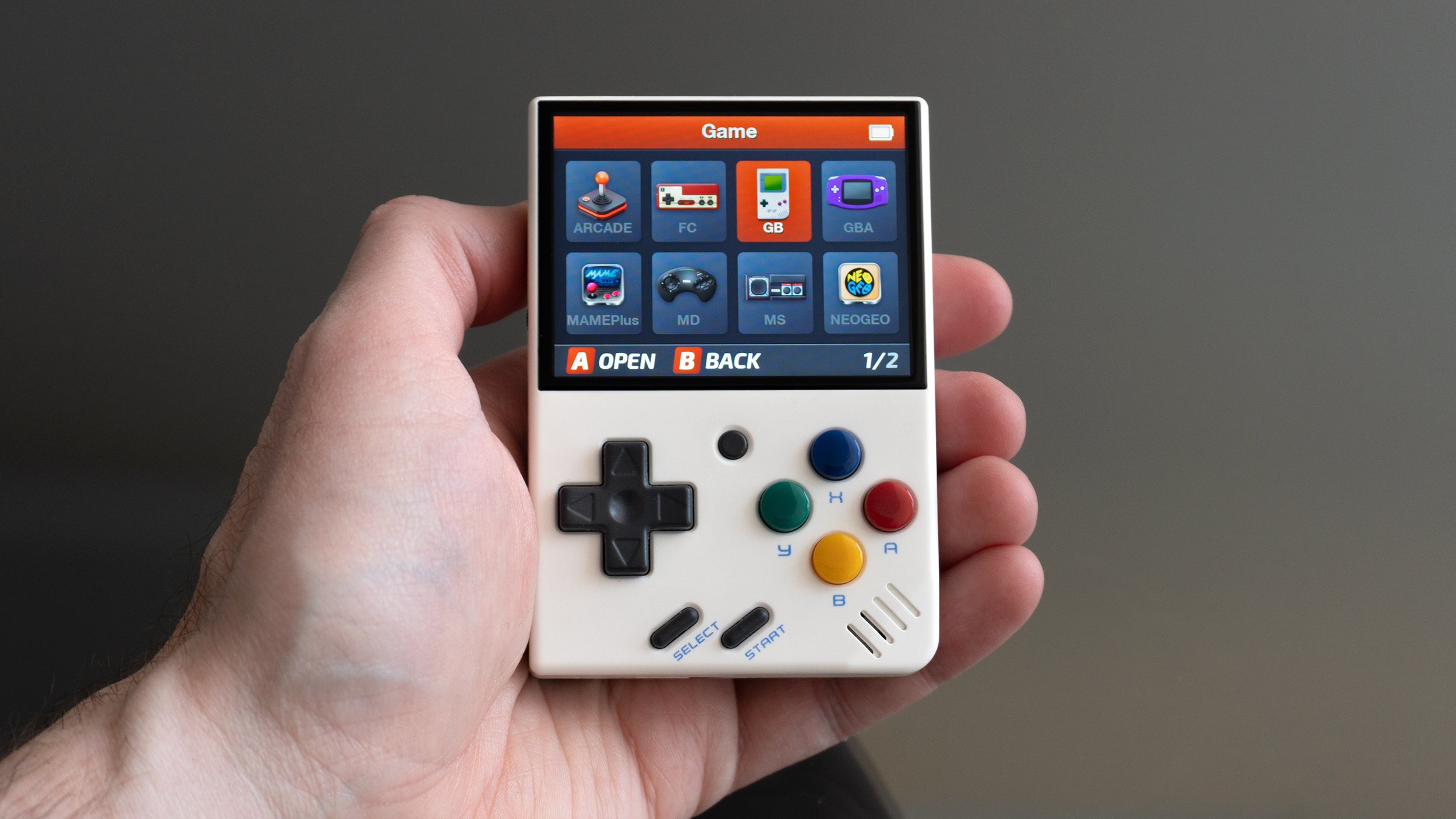
Roughly two-thirds the size of an iPhone 12 Pro, the Miyoo Mini feels similar in size to the Anbernic Retro Game 280V, but with a slightly improved layout that’s more comfortable to hold.
Feels Premium for the Price
Yes, you can get a handheld console for much cheaper than $US60 ($83), but you’ll undoubtedly be disappointed with not only its awful performance and game selection, but the build quality, too. This is where the $US60 ($83) Miyoo Mini genuinely stands out.
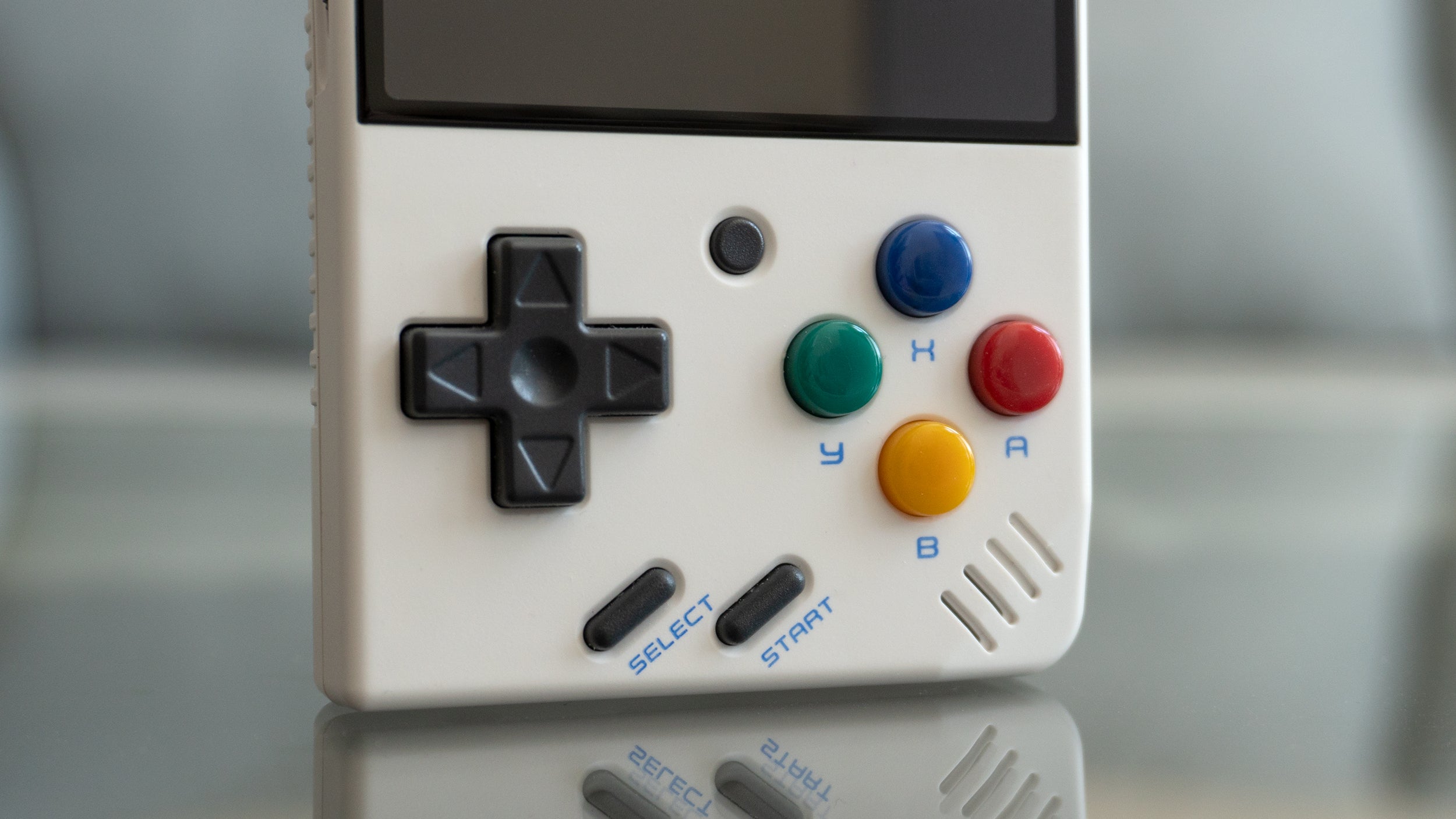
The shell is made from high quality plastic and the overall build feels quite solid. There’s no creaking or flexing of the shell or any components as you battle your way through a button masher, and the controls themselves feel very, very good. One of my few complaints with the Analogue Pocket was its completely smooth D-pad that still doesn’t feel quite right under my thumb. The D-pad on the Miyoo Mini features indented triangles that add some welcome texture.
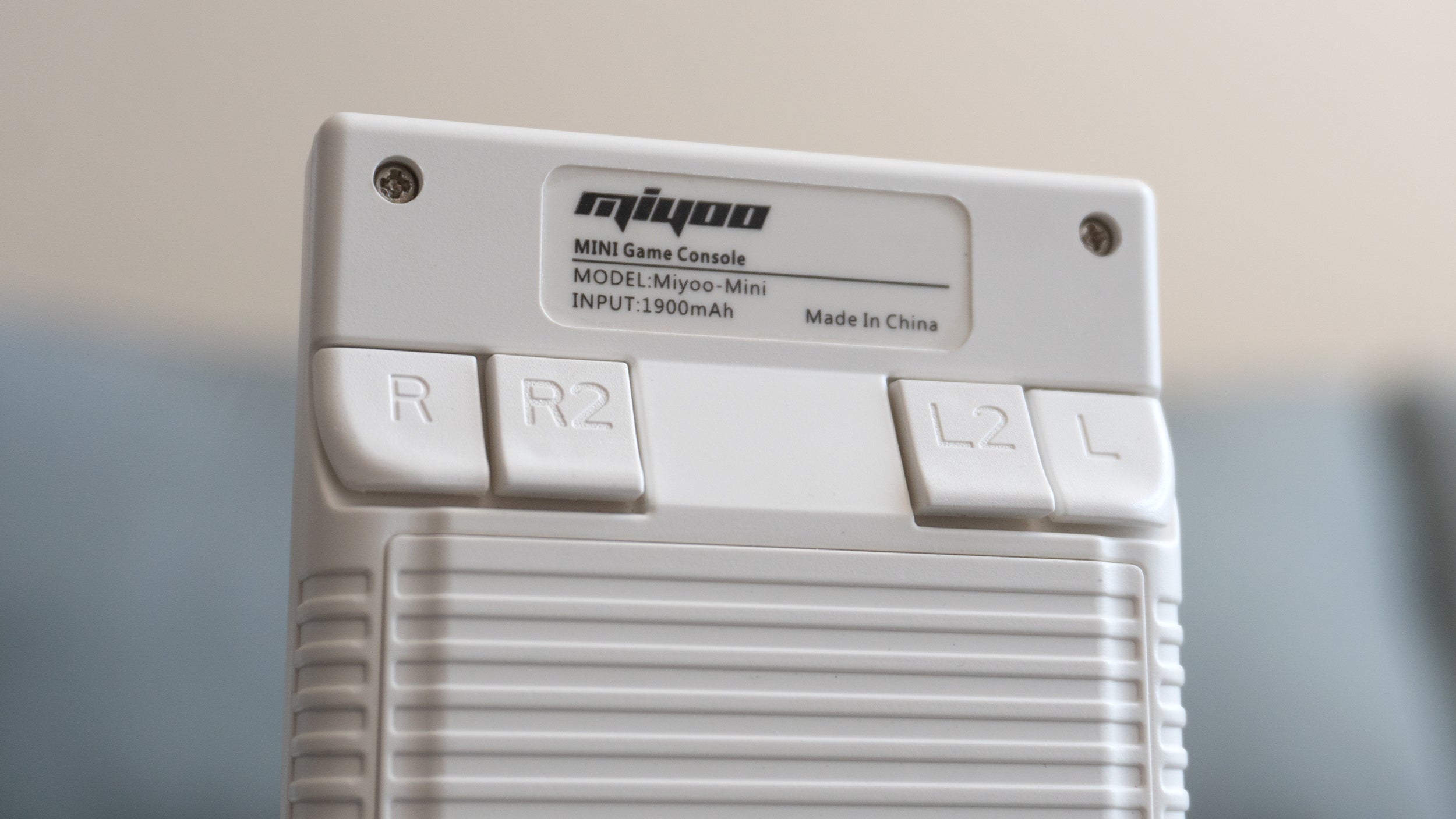
On the back, located about a half-inch below the top of the handheld, are two sets of shoulder buttons. They have a nice click and sit at different heights so they’re easy to differentiate by feel, but I’ll admit, given the compact size of the console, I sometimes have to change up how I hold the Miyoo Mini for games requiring me to reach and use these shoulder buttons. I’m not sure anyone has solved the shoulder button placement issue for vertically oriented handhelds (I even struggled to use them on the folding GBA SP) but here they’re passable.

My only real complaint with the controls on the Miyoo Mini is the font used to label the action buttons: specifically the “X” button that looks more like an “H.” I hate it, and on several occasions have come close to fixing it with a Sharpie.
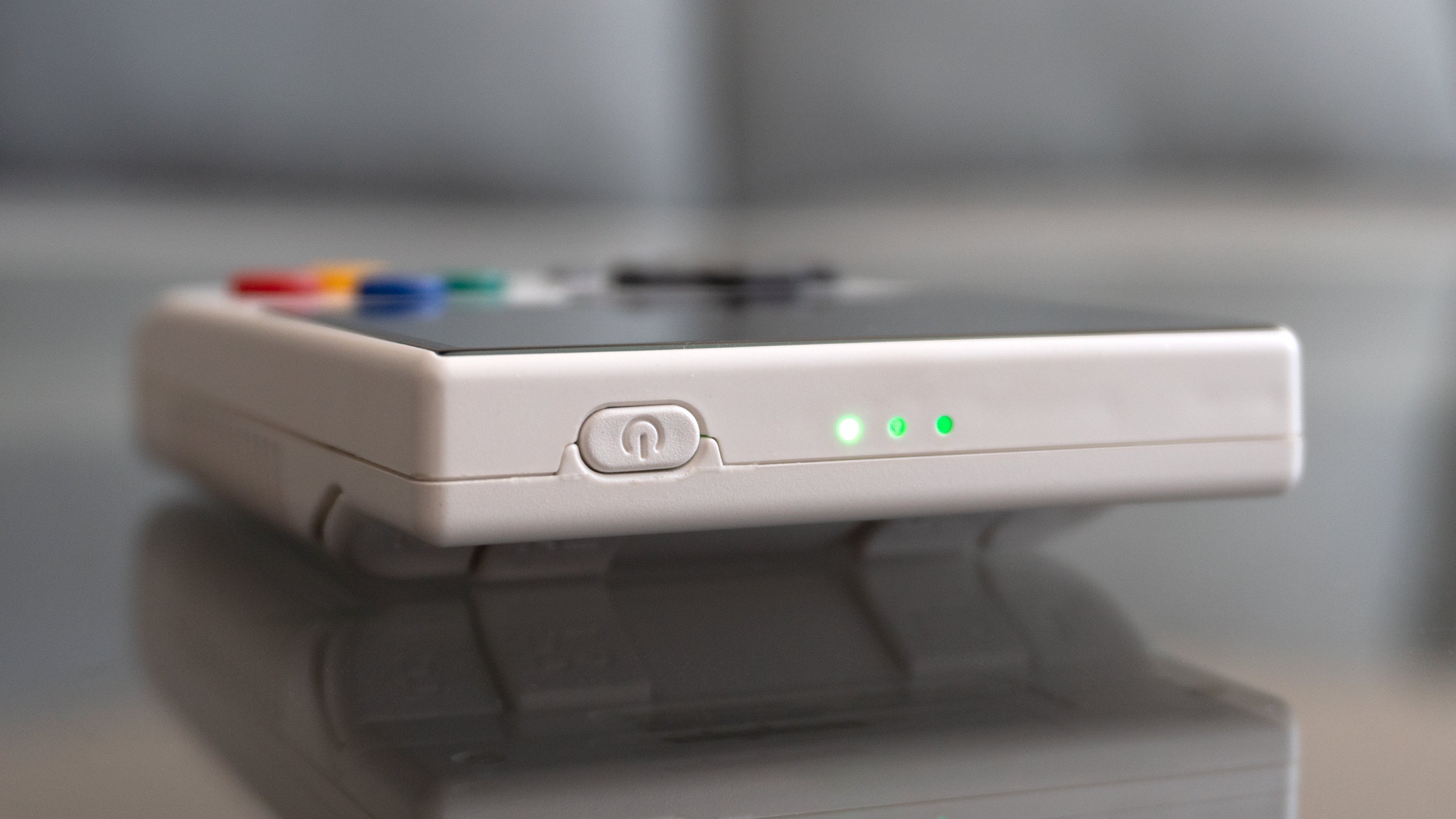
The rest of the Miyoo Mini’s hardware is fairly straightforward. On the top you’ve got a power/sleep/wake button next to a set of three LEDs used to indicate power and charging status.
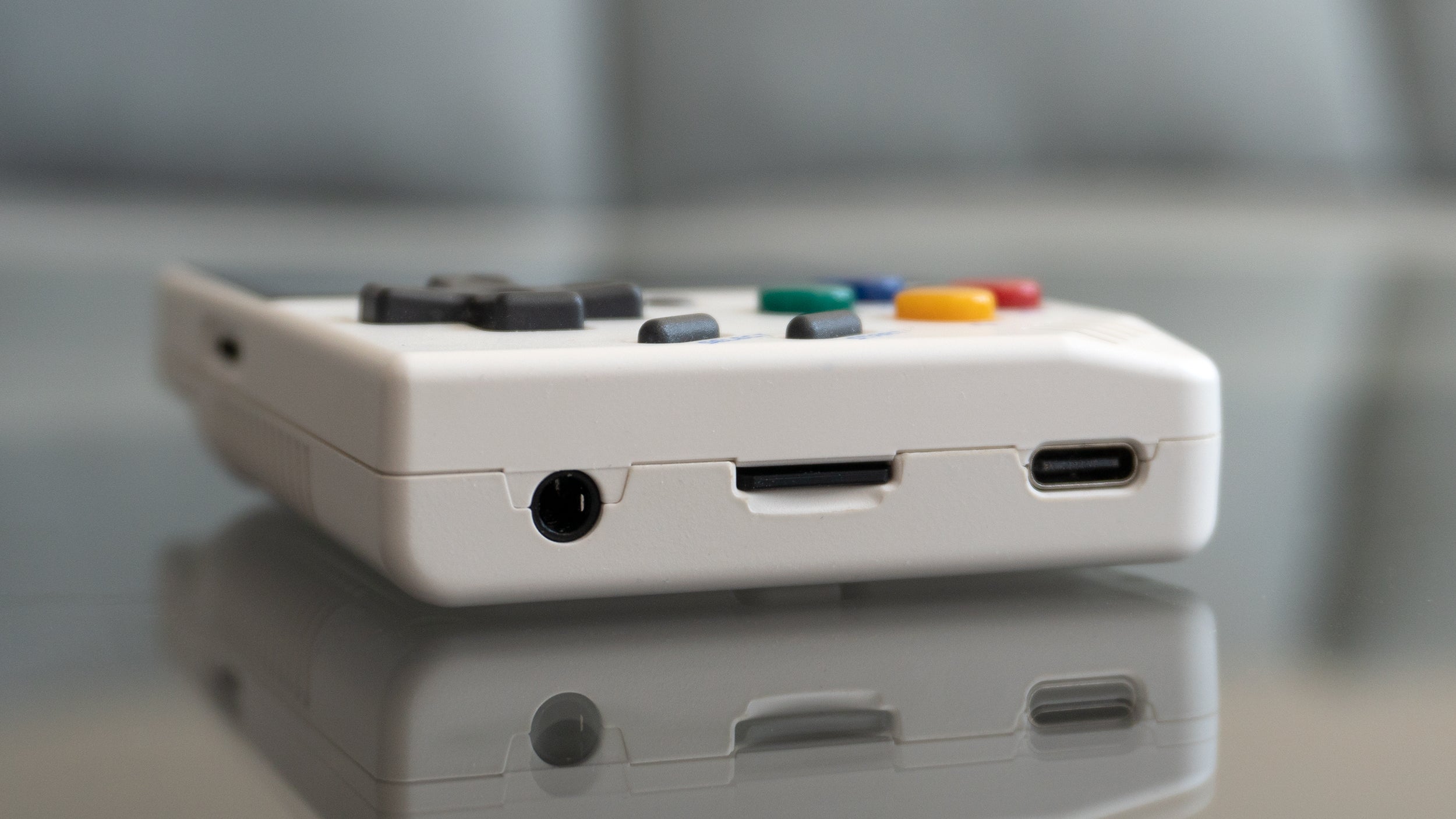
On the bottom you’ll find a headphone jack located in the correct place, a slot for a microSD card where game files and emulators are stored, and a USB-C charging port.
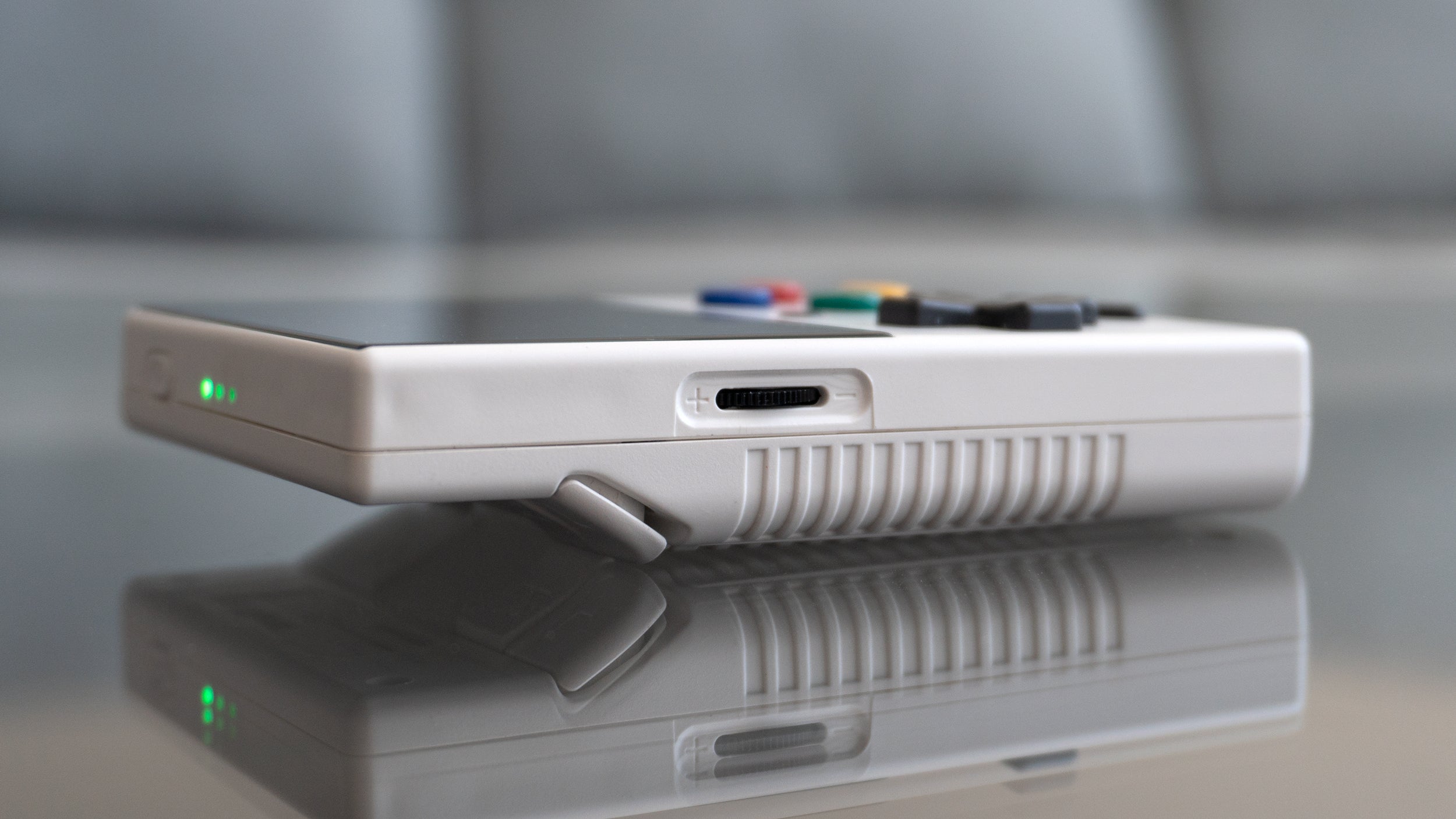
In lieu of a pair of up and down buttons to adjust volume, the Miyoo Mini uses an old-school analogue wheel, which I’ll admit I much prefer. It makes fine volume adjustments much easier, and it’s easier to quickly silence the console when you forget the last time you played you had it cranked. The Miyoo Mini does include a tiny mono speaker, and while it can get louder than you’d expect, the quality of sound it pumps out will probably have you quickly reaching for headphones if you actually care about hearing your games.
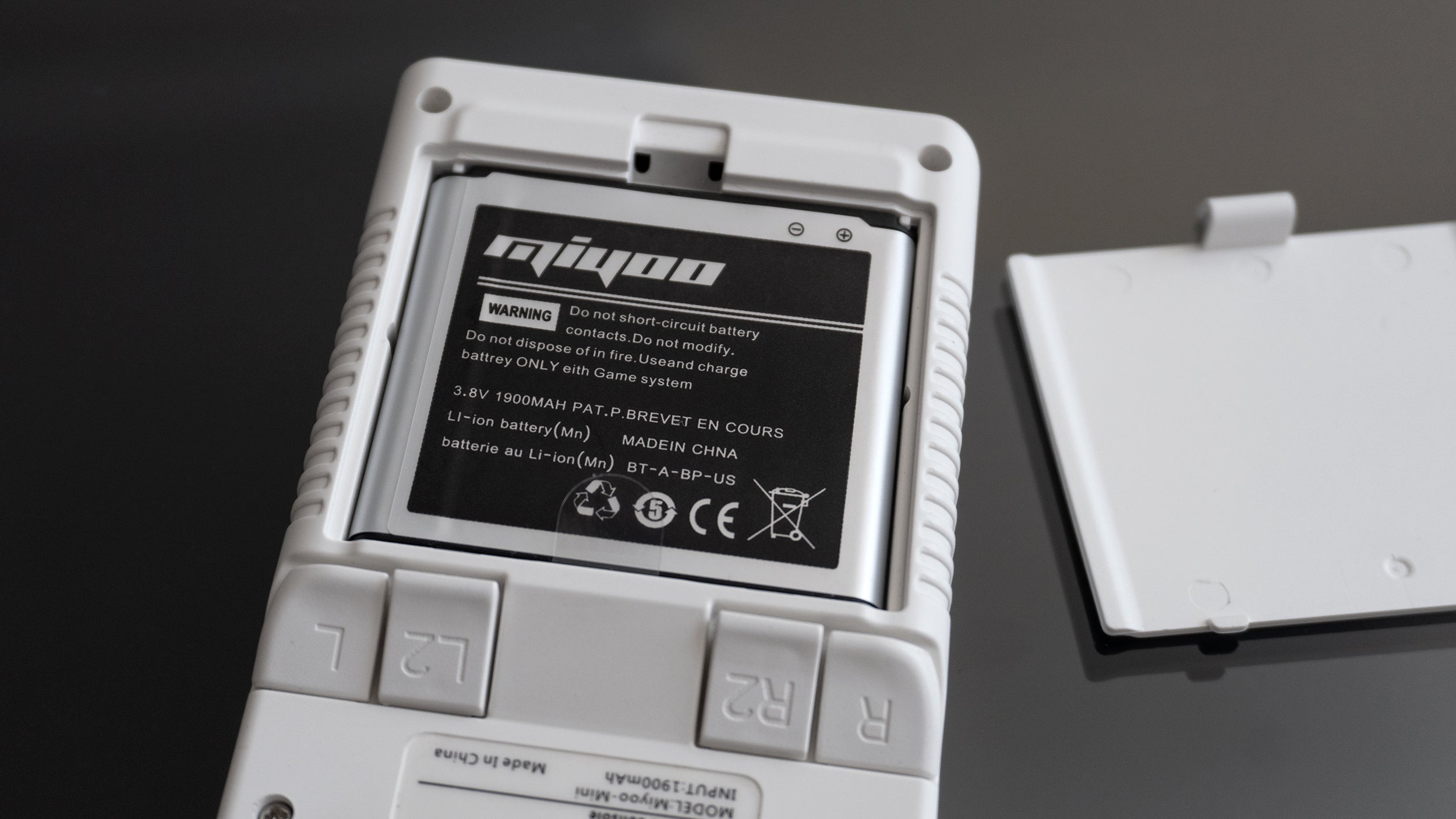
Another welcome surprise is a panel on the back that opens to reveal a removable battery. Rated at 1,900 mAh, it powers the handheld for roughly four to six hours depending on how bright the screen is and how processor demanding the games you play are. If you travel a lot it means you can keep a charged spare on hand to double the handheld’s runtime, because while the included battery is Miyoo-branded, it’s doubtful a matching third-party replacement will be hard to find.
A Beautiful Screen That’s Almost Perfect
It’s nice to see 640 x 480 screens becoming all but standard on tiny handhelds like these now, and the 2.8-inch IPS display on the Miyoo Mini looks quite good with very minimal bezels, excellent colour saturation, and good contrast.
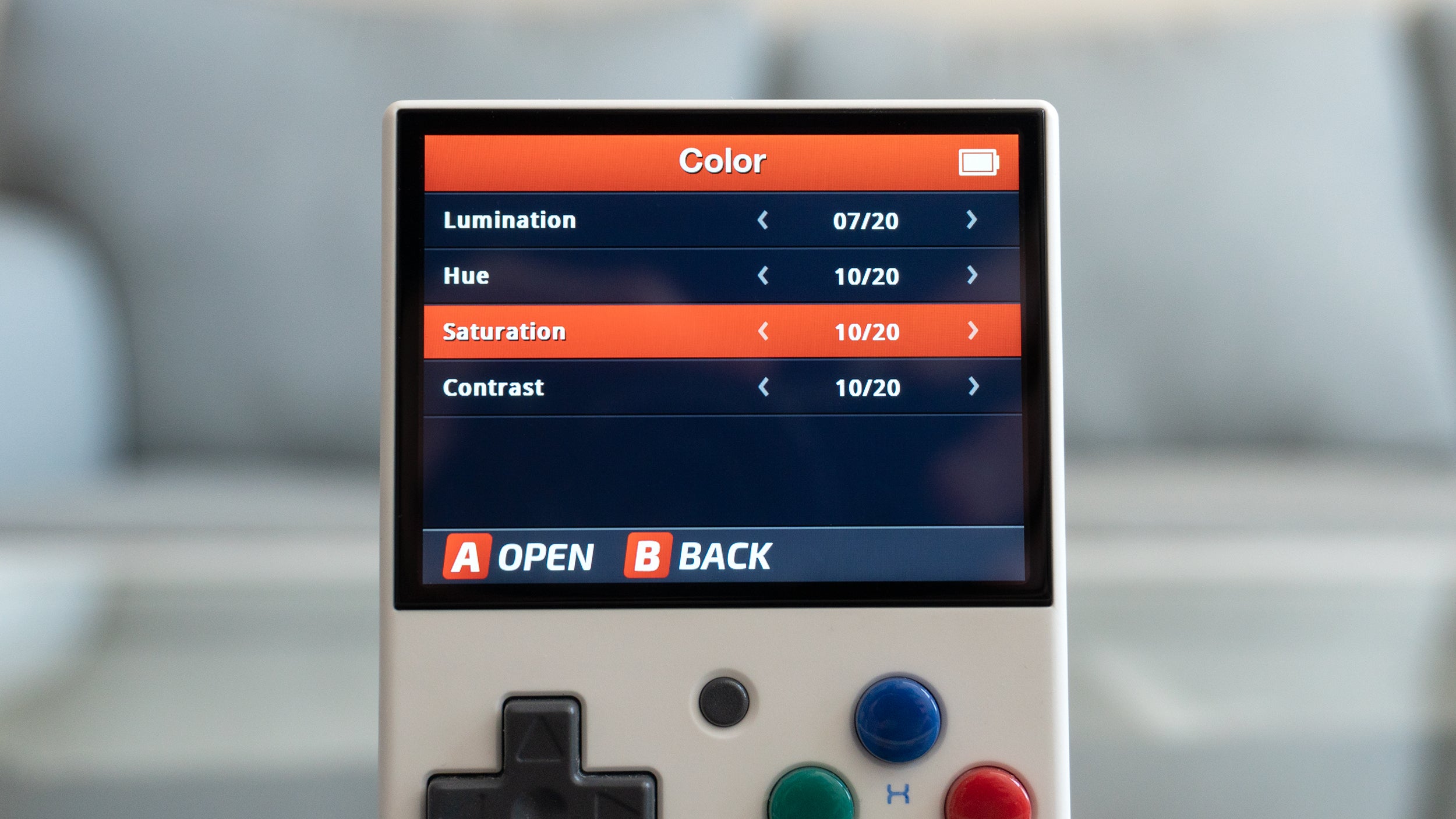
The latest firmware update also expands how you can customise the appearance of the Miyoo Mini’s display, including controls added for its saturation, hue, and contrast, in addition to brightness. My only complaint with the screen is its relatively limited viewing angle. Tilt the handheld ever so slightly and you’ll immediately notice a drop in contrast. But since you’ll be staring at the screen directly the entire time you play, I certainly don’t think the viewing angle issues are a deal breaker — especially not with a $US60 ($83) price tag.
Easy-to-Use Software
The Miyoo Mini is powered by a Sigmastar SSD202D Cortex-A7 dual core chip running at 1.2Ghz with 128MB of RAM. Like with most other cheaper, smaller handhelds, there’s no dedicated graphics processor for 3D, which means that while some games from the original PlayStation era can run on it with decent performance, it will often require tweaks to the emulator, including frame skipping, to achieve solid gameplay. I recommend sticking to classic 8-bit and 16-bit titles from systems like the NES, Genesis, and Super Nintendo, as well as games from older handhelds like the Game Boy, GBA, and even the Sega Game Gear, so you won’t be disappointed in what it’s capable of. If you want something more powerful, you’re going to have to splurge.
Unlike the Analogue Pocket, which requires original game cartridges, the Miyoo Mini is completely dependent on ROM files loaded onto a microSD card. As a result, a certain level of competency with copying files from a computer is required, and as an important reminder, playing games using ROM files, not the original cartridges or discs, is a legal grey area which can also make sourcing these types of files a challenge.
I’ve been testing and reviewing handheld emulators for a few years now, and one feature that’s become more important to me is how easy they are to use. It seems like an obvious thing, but most of these devices are built on Linux with a front end that almost feels like an afterthought. Most require quite a bit of practice to find your way around, or the use of specific button combos to navigate an emulator’s menus or simply exit a game. This is one area where I feel Anbernic’s handhelds are lacking, but the Miyoo Mini delivers a relatively straightforward and painless experience.
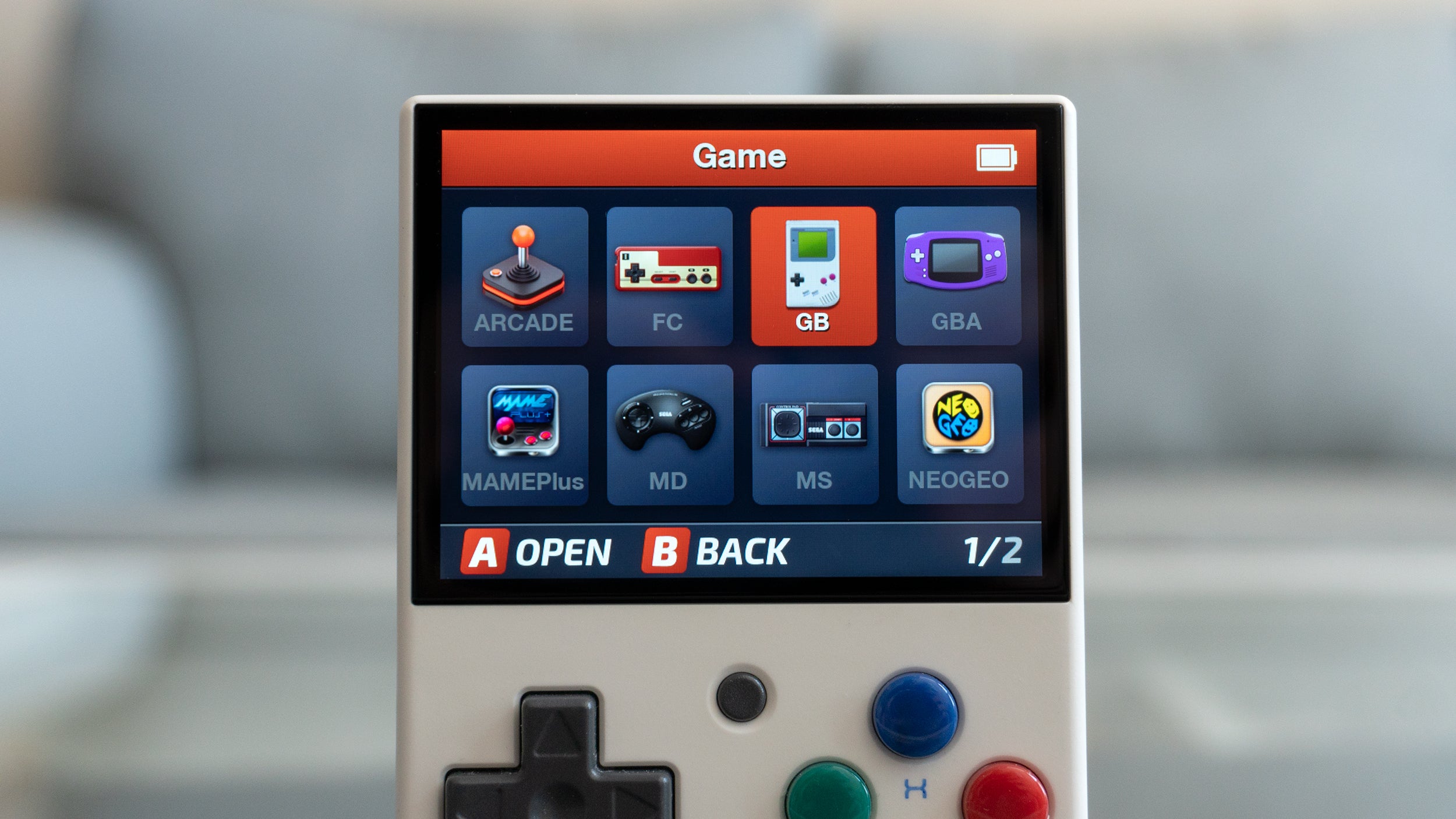
The Miyoo Mini I tested came with standalone emulators pre-installed for all of the most popular consoles of yesteryear (you can install additional ones for more obscure systems if you choose), and while the actual user interface isn’t going to have Apple’s designers taking notes, it’s not hideous either. The Miyoo Mini also comes installed with RetroArch, which is an alternate front end with its own emulators and cores that’s more customisable for experienced retro gamers. So while I find the Miyoo Mini easy to navigate, configure, and use, it’s not a device that necessarily only caters only to retro gaming beginners.

I especially appreciate the inclusion of a context-sensitive button located right below the screen that can be pressed at any time to load, save, or exit back to the Miyoo Mini’s home screen, or access a particular emulator’s own unique customisation settings. It’s an added level of polish that makes the Miyoo Mini easier to jump right into, but I’m not going to pretend like the hardware is perfect. For $US60 ($83) you’re not going to get as smooth an experience as you would from a Nintendo handheld, and that was made obvious when performing a recent firmware update which specifically required the Miyoo Mini’s battery to be removed and the console instead powered by a USB-C to USB-A cable connected to a standalone power adaptor to ensure the device didn’t brick itself. Yeesh! Here’s to hoping weird issues like that will be ironed out in future updates.
Impressively Good
If all the hoopla around the Analogue Pocket has made you extra nostalgic for retro gaming but you missed out on Pocket preorders or don’t want to drop $US220 ($305) on another console, the Miyoo Mini is absolutely worth considering as an alternative. Software emulation may never be as perfect as the approach Analogue takes, but as long as you stick to 8- and 16-bit titles, it’s doubtful you’ll find much to complain about the Miyoo Mini’s performance. It’s solidly built, has a lovely screen, and features a friendly but customisable UI that both experienced and beginner retro gamers can jump right into.
Editor’s Note: Release dates within this article are based in the U.S., but will be updated with local Australian dates as soon as we know more.
